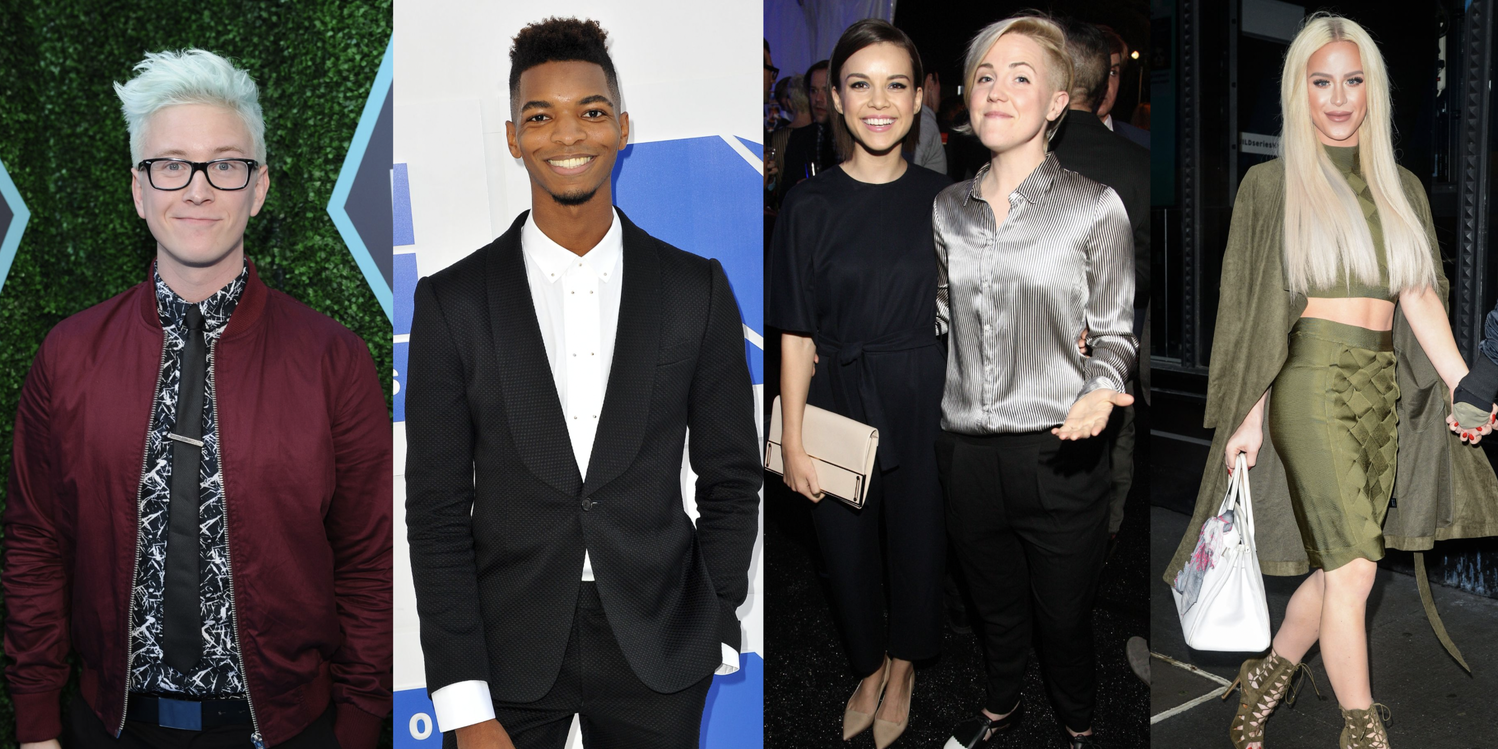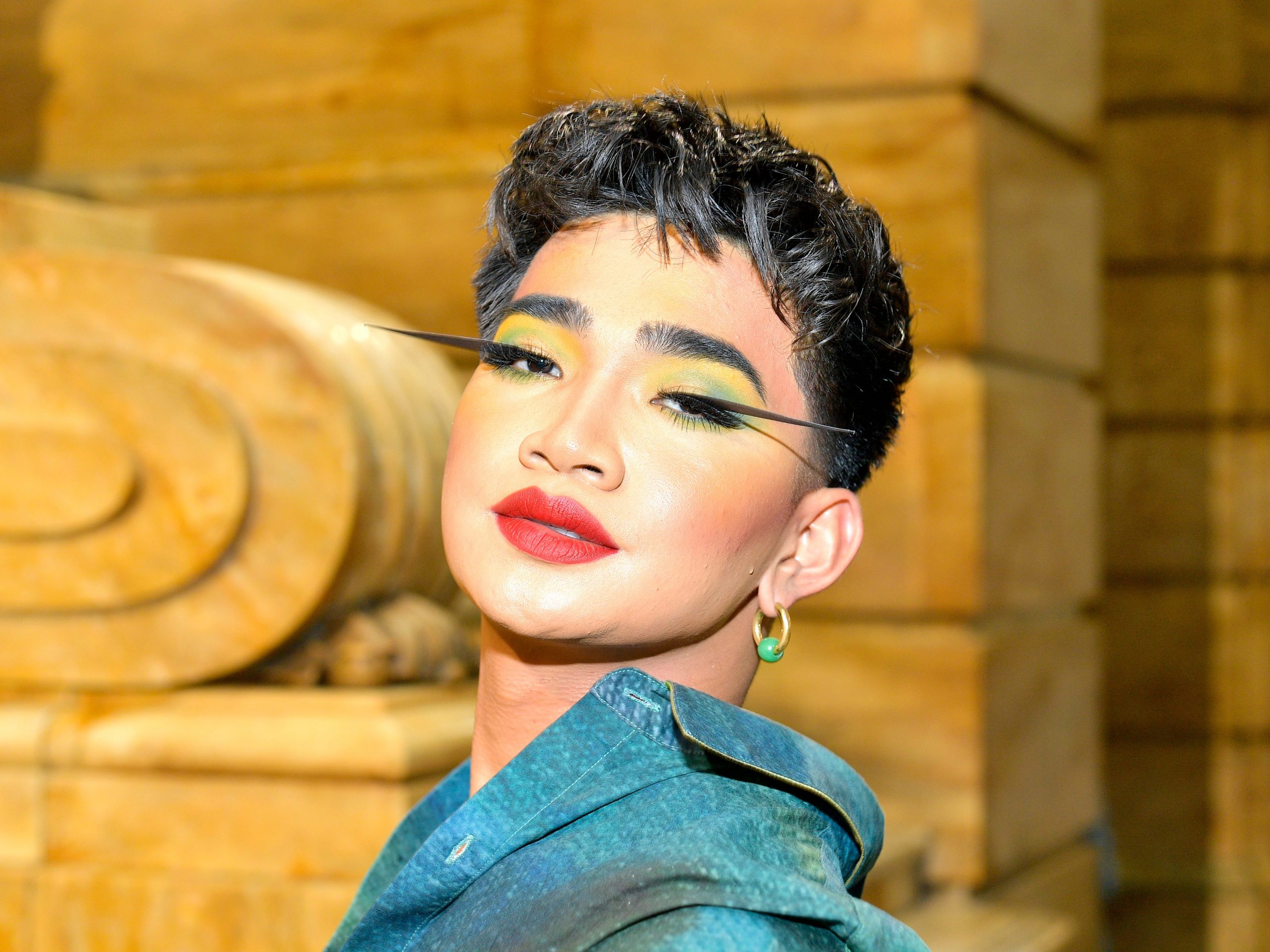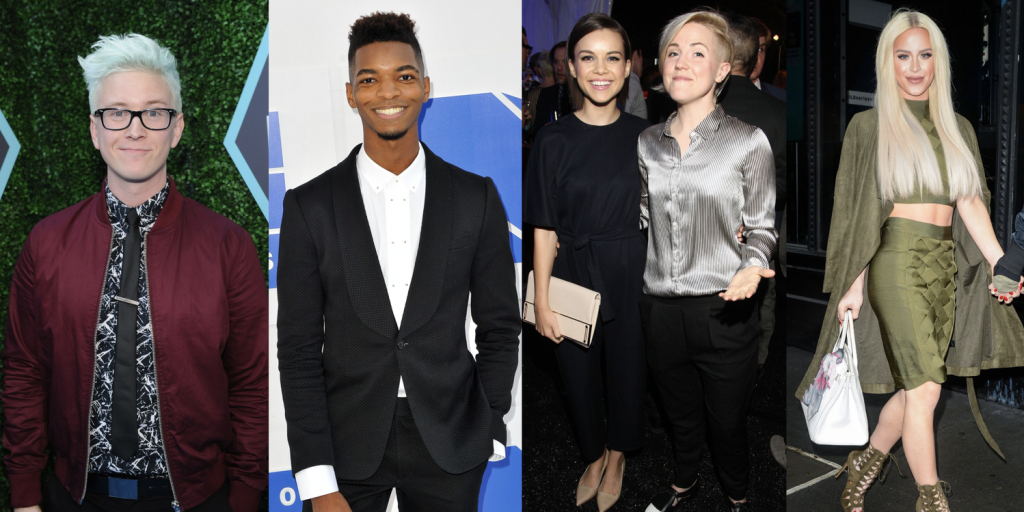
(In order from left to right): Stefanie Keenan/Getty Images. Allen Berezovsky/Getty Images, Tommaso Boddi/Getty Images and Ray Tamarra/Getty Images
- YouTubers coming out as LGBTQ+ helped me discover my own sexuality.
- Queer YouTube fans told me how creators like Tyler Oakley inspired them to come out, too.
- "YouTube is tremendous in helping them feel more secure in their identity," GLAAD said.
- Visit Insider's homepage for more stories.
When my parents finally allowed me to use the computer alone, I began finding myself in corners of the internet I probably shouldn't have been.
At 13, I would frequently search "two boys kissing" on YouTube and watch the men make out. I'd then quickly delete the browser's entire search history, shut down the computer, and walk away as if nothing happened.
I was at the age when I started discovering my own sexuality. But I was on my own, with no one to talk these feelings through with. I turned to the internet for help.
But as I continued to look up content I felt I wasn't supposed to, I stumbled across Davey Wavey, a gay YouTuber who spoke openly about sex and sexuality and now has over 1.37 million subscribers. Since he started his YouTube channel in 2007, he would sit in front of the camera – most of the time, he was shirtless – and talked about his coming-out story. His channel also featured the occasional sex tip.
In a recent interview, Wavey told me he felt a responsibility to his followers to keep sharing LGBTQ+ content.
"I kind of realized as more and more people were tuning in that maybe there was a responsibility or an opportunity to kind of do something a little bit," he said.
After discovering his videos as a young teen, I became fully enthralled with the YouTube world, especially queer content creators like Tyler Oakley, Kingsley, Connor Franta, Ingrid Nilsen, and Hannah Hart. These social-media stars inspired me to live authentically as myself.
Years later, the queer community on YouTube is still thriving today.
A representative for GLAAD, the leading US-based organization tracking media representation of the LGBTQ+ community, said that during pandemic-induced lockdowns, queer youth turned to YouTube for support and education, a finding that was supported by April 2021 research published by the New Zealand-based Young & Resilient Research Centre.
"Overall we know that queer youth want to find relatable content and the power of one finding that on YouTube is tremendous in helping them feel more secure in their identity," the GLAAD representative said.
One man found his escape with creators like Ingrid Nilsen and ContraPoints
Five young LGBTQ+ Americans interviewed for this article said that discovering queer YouTubers gave them the courage to be themselves.
Joseph Ruiz, a queer 23-year-old graduate student at the University of California, Irvine, told Insider he was bullied as a kid and found his escape by watching YouTube.
"When I saw YouTubers coming out, I would tear up and hope that one day I would also have the courage to be open to doing so," he said.
One coming-out video that resonated with Ruiz was Ingrid Nilsen's in 2015. In a black-and-white striped t-shirt paired with a bold red lipstick, she sat in front of the camera and said "I'm gay." Holding back tears, she let out a sigh of relief. "It feels so good to say that," she told millions of subscribers.
Seeing Nilsen's visual relief "kept ringing in the back of my mind," Ruiz said. "She knew not everyone was going to accept her for who she was, but she was finally free, and I wanted to finally feel free."
Ruiz told me that as he struggled with his sexuality, YouTube made him feel like he wasn't alone. He said he initially came out as gay in high school but now identifies as queer.
"The most difficult person to come out to was myself, because I knew that once I accepted it, I could never go back to pretending, and was going to face the adversity that society brings to the LGBTQ community," he told me.
Queer creators were 'unapologetically themselves'
While many popular YouTubers posted coming out videos, other LGBTQ+ creators like Tyler Oakley and Bretman Rock never did. This was comforting for Aris Sherwood, a 21-year-old college student. Sherwood, who is bisexual, told me she had struggled with her sexuality since elementary school, but as she got older and browsed YouTube, she was able to learn more about herself.
"These YouTubers... helped me grow as a person and helped me accept who I was when I was 14 or 15 years old," Sherwood said.
Khaaliq Crowder, a 25-year-old community curator at Snapchat who is gay, told me that he loved watching the way YouTubers Kingsley (whose channel is now JustKingTBH) and Lohanthony were "just unapologetically themselves" when they were on video.
Blake Norwood, who is 26 and identifies as non-binary, said YouTube helped them understand "how to express my thoughts and opinions on social issues in a more concise and constructive way."
Assem Khaled, a 25-year-old blogger who is bisexual and non-binary, told me that YouTubers, especially ContraPoints - a transgender YouTuber who posts video essays on social and political issues - helped them embrace their identity.
"Her introspective essays on the nature of queer and trans identity really helped me take a look at myself and realize that I'm neither [cisgender] nor [heterosexual]," Khaled said.

Roy Rochlin/Getty Images
Blake also said YouTube's emerging cohort of male beauty gurus spearheaded by creators like Manny MUA, Jeffree Star, and James Charles, allowed them the freedom to develop their sense of self-expression.
"I kind of remember this opening up a world to me which validated my interests and encouraged me to play around with makeup regardless of if my parents or classmates were confused by it," they said.
Wavey told me that being himself online and always evolving has kept him on the platform for nearly 15 years, where his videos continue to find new viewers.
"Authenticity is what people really value and if your heart isn't in what you're doing, then people are going to see that," he said.
